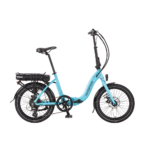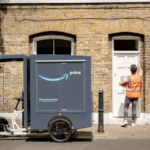D
Deleted member 4366
Guest
With only the normal battery, the maximum speed is about 15mph. Once you get past 12 mph, the current reduces in a ramp down to zero amps at its maximum no-load speed of about 17mph. At that speed, the motor is still spinning, but virtually no current is drawn, so, in that respect, the faster you go, the further you can go..
When you add the booster pack, the whole power curve moves up the speed range, so that you'll be drawing significant current at 17mph. Now you have to pedal at 20mph to reduce it close to zero, so you're likely to use a lot more wHs, even if you go at the same speed, but you have 30% more battery to compensate. If you use the PAS sensor at level one, it shifts the power curve back down, so you'll get a lot more range.
When you add the booster pack, the whole power curve moves up the speed range, so that you'll be drawing significant current at 17mph. Now you have to pedal at 20mph to reduce it close to zero, so you're likely to use a lot more wHs, even if you go at the same speed, but you have 30% more battery to compensate. If you use the PAS sensor at level one, it shifts the power curve back down, so you'll get a lot more range.






